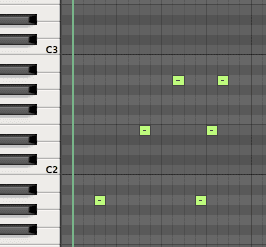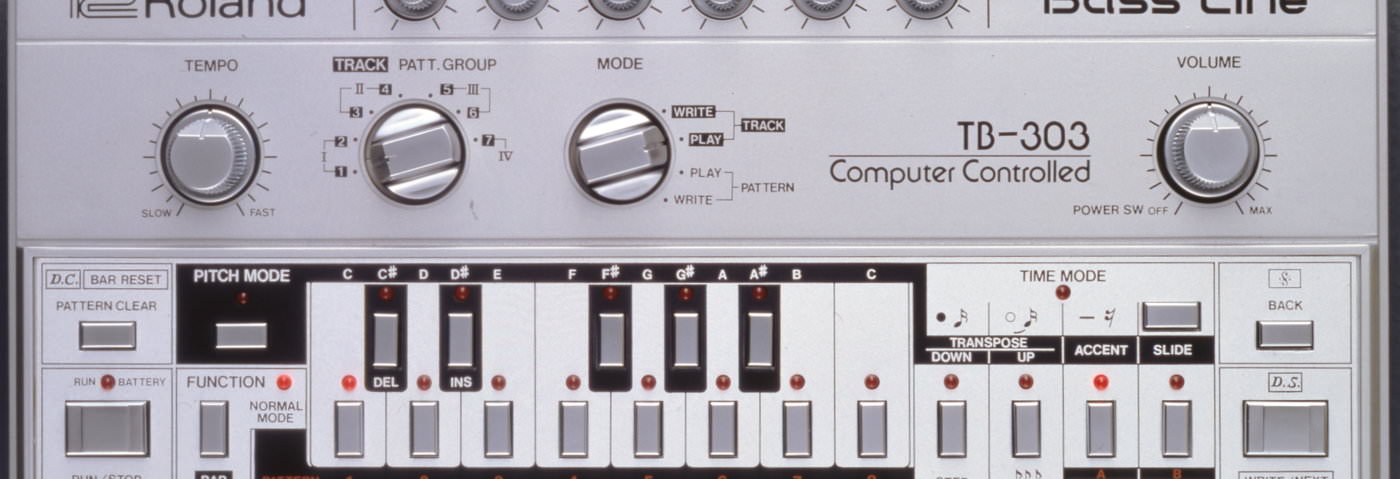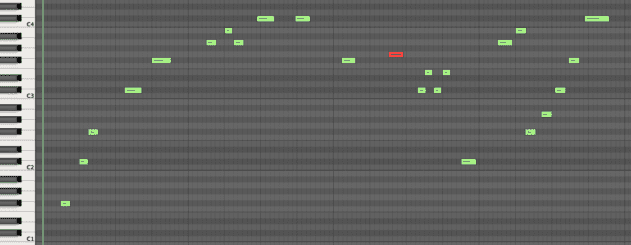In the latest instalment of our dance music theory column, we take a look at how repeating melodies can be used to create hooks and provide continuity.
The name may sound grand, but in musical theory an ostinato is simply a melody line or riff that repeats throughout prolonged sections of a track, typically over chord changes. As well as potentially creating a catchy and memorable hook, an ostinato can provide continuity and help keep a track moving, linking different sections together nicely.
In this instalment of Passing Notes we’ll examine some tracks which use this technique effectively, then we’ll have a look at writing an acid-inspired ostinato of our own.
Can You Feel It?
To start off, let’s have a listen to Mr Fingers’ 1986 Chicago house classic ‘Can You Feel It’:
The Larry Heard-produced track uses the minor and major 7th chords we discussed in a previous Passing Notes, but this time we’re focusing on the simple riff that repeats throughout the track. Here’s how it sounds on its own, and how it looks transcribed in a piano roll:
Audio Player
The riff uses just two notes, A and E. These notes form the 1st and 5th notes of an A minor or major scale. We can hear from the track how versatile this simple riff is in A minor, fitting over the chords A minor 7, F major 7 and E minor 7 (all these chords are constructed using notes from the natural A minor scale).
The lack of a major or minor 3rd in this particular ostinato means that it could just as easily fit over an A major 7 chord, as we can hear below:
Audio PlayerFurther examples
Another effective example of an ostinato is the Nightrider-esque riff that repeats throughout The Chemical Brothers’ 1999 hit, ‘Hey Boy, Hey Girl’:
When the bassline changes from a D to a G at 0:53, the ostinato continues, keeping the track moving and simply linking these two sections of the piece together.
Now let’s look at a slightly more complex example, Spor/Feed Me’s track, ‘Mordez Moi’, this version of it taken from Noisia’s Fabriclive 40 set:
Below is the riff in F# minor that starts at 0:28. (The G, highlighted in red is not actually in a natural F # minor scale, but isn’t prominent enough to affect the key.)
Audio PlayerAt 0.58, we hear how it builds anticipation over the ascending bassline, (also in F# minor) F#, A, B, D, before continuing over the drop at 1.12.
As well as adding hugely to the movement and ‘groove’ of the track, the repeated melody provides continuity and helps link the different sections of the track.
Next, we’ll take a look at how to put some of this theory into practice…


08.36 AM
Wow great post. This is something I have intuitively understood, and even used, but to see that there is solid theory behind it is enlightening. It’s great that you have taken the time to distill this in a way that is useful to those of use left to blindly strike out in the dark, armed only with our intuitive sense of music. 🙂
Great series! I will be posting this article in several places. 🙂
10.33 AM
“The lack of a major or minor 3rd in this particular ostinato means that it could just as easily fit over an A major 7 chord, as we can hear below:”
Why is that exactly? Is that because of the third is the strongest note in a chord?
04.04 PM
Hey Niels,
You’re right, it is usually the third and its interaction with other notes that gives a chord the majority of its ‘character’, and in this sense the third could be said to be the strongest, or most descriptive interval of the scale.
Another explanation for this particular case would be that the root note and the 5th note of a scale are the same notes regardless of whether the scale is major or minor, so this particular riff will fit over chords in an A major or A minor scale.
Using a major or minor 3rd in the ostinato might add to its character and melody, but could also limit the number of chords over which it will fit.
Cheers,
Oliver
10.23 AM
Hi Oliver,
Thanks for the explanation and taking your time . The logic behind it is important for me to know why I do this and when etc.
Niels
04.09 PM
so this is some powerful shit here. was waiting for a mag like this so long. more of this stuff you guys rock! for sure
many greetz
10.28 PM
Wow, this is a great explanation. The ostinato used in the acidlike example is derived from the chord based on the first note of a scale (whether it’s major or minor). Are there other ways to ‘calculate’ a fitting astinato to a certain scale?
02.53 PM
Loved this feature, thank you!
06.53 AM
Update Required? The youtube videos are fine but right below the, play, pause, etc… commands it says, “To play the media you will need to either update your browser to a recent version or update your Flash plugin.” I have the latest version of Google Chrome, I also just downloaded and installed the latest Flash Plugin for the heck of it and I’m still getting the error. Same thing from the latest version of Safari.
10.06 AM
Discohead – sorry to hear you’re having problems with the audio players. We’ve emailed you to try and resolve it.
12.06 PM
Recently discovered this online magazine and I’m loving these articles! The connivence of the music players and the pictures is great.
12.50 PM
thanks for all those great tutorials! i wouldn’t miss it…
02.21 PM
Thank you so much for this! I have picked up this theory blindly I guess by experimentation but to have it explained like this is invaluable for people just starting out and possibly making the transition from DJ’ing into the studio like myself.
08.29 PM
wowo one of the best sites on dance music i have found… newbie to music but this is helping 🙂